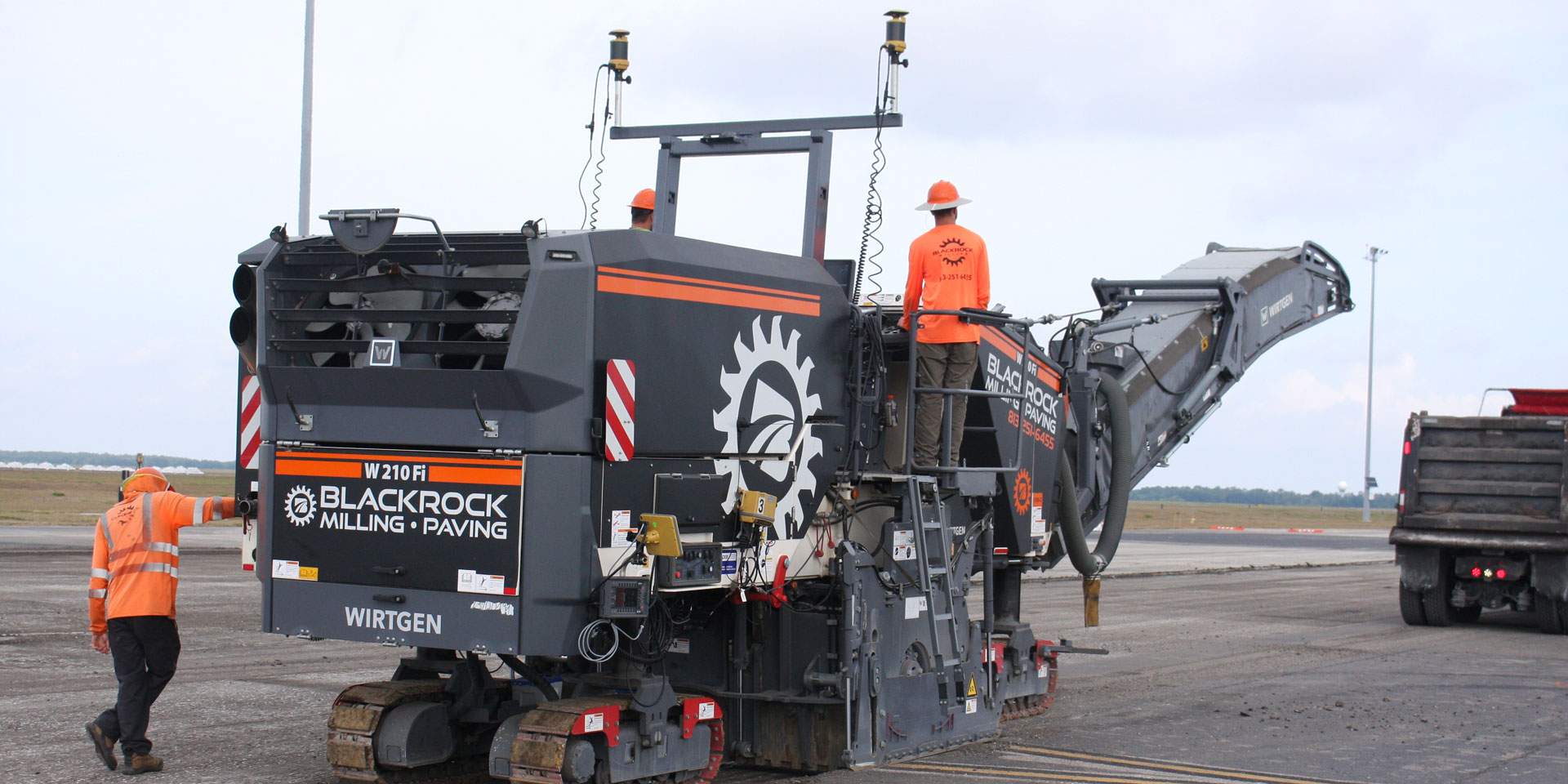Florida paving specialist meets tough specs with a millimeter solution.
When it comes to cutting to the chase, it would seem Herb Jacob had few equals. After all, Jacob, the founder of Ajax Paving, selected the name “Ajax” solely because he knew it would appear at the top of phone book listings of paving companies. Long before OSHA, he recognized that safety begets success — a lesson some companies don’t get even today. And he credits the company’s early profitability and acceptance to the high-quality, highly productive tools he made available to his team. Doing so, he believed, would allow them to provide Ajax customers with the highest quality pavement work possible — and ensure repeat business. Today, more than 70 years later, that philosophy is still fully embraced and evident in the work the company just completed at MacDill AFB, Florida. There, the latest millimeter-grade GPS technology drove both the milling and paving operations for a runway apron repaving effort. Seven decades after Jacob brought Ajax to life, the results of using the best solutions available are the same: a dramatic increase in productivity and efficiency, coupled with a safer stakeless, stringless, work environment. Because, when you’re right, you’re right forever.
The Real Big “Mac”
With more than 15,000 military and civilian personnel, MacDill is the largest U. S. Air Force base in Florida — and the third largest in the world. Home to the 6th Air Refueling Wing, MacDill houses a fleet of two dozen Boeing KC-135R Stratotanker aircraft, a long-range aerial tanker capable of refueling a variety of other aircraft in mid-air, anywhere in the world and under any weather conditions.
When a section of one of the major aprons used to stage those aircraft on a daily basis was identified as deficient and slated for repair, the milling and resurfacing project was awarded to Ajax Paving. According to Ben Harlan, Ajax’s field technology manager, it was a perfect fit for the company’s capabilities.
“This company has immersed itself in GPS technology for a long time — easily more than a dozen years now,” he said. “We have GPS machine control on most of our dozers and graders and some of our excavators so it was a natural progression for us to bring it into the paving part of the operation, which we did several years ago. Our management team recognizes the benefits the technology brings in terms of accuracy and productivity and knew those — and more — would come into play at MacDill.”

















